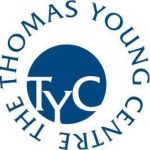
- This event has passed.
Thomas Young Centre Early Career Award Symposium
B10 Materials Sciences Research Hub (MSRH), White City Campus, Imperial College London
2 December @ 3:00 pm – 5:30 pm
The TYC Early Career Prize, established in 2022 will be awarded to an early career researcher in recognition of their original published research in the theory and/or simulation of materials or (bio)molecules
Shortlisted applicants are invited to give an oral presentation of their research work at this special in-person Symposium.
Attendance is free but we kindly ask you to register here
Christoph Schran, Cambridge – Understanding complex aqueous systems with machine learning
Abstract: Simulation techniques based on accurate and efficient representations of potential energy surfaces are urgently needed for the understanding of complex systems such as solid-liquid interfaces.
In this talk, we present our recent methodological advances for machine learning potentials enabling the efficient development and validation of models for complex aqueous systems.[1,2]
Building on the seminal work by Behler and Parrinello, we make use of committee models providing accuracy improvements, measures of uncertainty, and strategies for active learning.[1]
These features enable the streamlining of the development of new models in an end-to-end framework to tackle complex aqueous systems.[2]
Finally, we demonstrate the capability of these approaches for providing insight into the water flow in single-wall nanotubes[3] as well as the complex phase behaviour of mono-layer confined water[4].
[1] C. Schran, K. Brezina, O. Marsalek, J. Chem. Phys., 2020, 153, 104105
[2] C. Schran, F. L. Thiemann, P. Rowe, E. A. Müller, O. Marsalek, A. Michaelides, Proc. Nat. Acad. Sci., 2021, 118 (38), e2110077118
[3] F. L. Thiemann, C. Schran, P. Rowe, E. A. Müller, A. Michaelides, ACS Nano, 2022, 16, 7, 10775–10782
[4] V. Kapil, C. Schran, A. Zen, J. Chen, C. J. Pickard, A. Michaelides, Nature, 2022, 609, pages 512–516
Zsuzsanna Koczor-Benda, UCL – Computational molecular design for terahertz detection and surface-enhanced applications
Molecules interacting with electromagnetic fields confined in nanometre-sized structures experience an extreme enhancement of their spectral intensities, which can be utilized in new technologies e.g., for biosensing, security scanning, and wireless communication. These emerging technologies need molecules with highly specialized and optimized properties to achieve high efficiency.
We investigate a promising new terahertz detection technique based on frequency upconversion in nanoantennas through molecular vibrations. We present a computational methodology using quantum chemistry calculations and machine learning tools to find molecules with optimal properties for terahertz detection. By screening databases containing millions of molecules, we achieve a two-orders-of-magnitude improvement of spectral intensity and identify highly active functional groups.
Additionally, we introduce an open-access interactive online database and toolbox, Molecular Vibration Explorer, that enables exploring and screening thousands of molecules specifically for surface-enhanced applications. Based on accurate quantum chemistry calculations and comprehensive numerical tools, this platform enables customized visualization of vibrational spectroscopic properties for applications in e.g. SERS tags, vibrational strong coupling, and toxic substance detection by frequency upconversion.
Romain Reocreux, UCL – What makes Single-Atom Alloys so Special? Active Site Miniaturisation for Boosted Catalytic Performance
Single-Atom Alloys (SAAs) are emerging materials with outstanding catalytic performance. They consist of active transition metal atoms dispersed, as single-atom dopants, at the surface of a more inert coinage metal host (see Figure). This miniaturisation of the active site, from an extended surface in traditional catalysts to single atoms, offers the possibility to explore new chemistries unattainable with traditional catalysts (1).
Using Density Functional Theory (DFT) calculations, we first computed the activation and reaction energies of a series of catalytically relevant elementary steps (C-H, N-H, O-H, H-O and C=O dissociations) (2). We showed that SAAs could activate chemical bonds more efficiently than pure transition metal nanoparticles. Combining further DFT calculations with high-fidelity kinetic Monte-Carlo simulations, we revealed properties unique to SAA heterogeneous catalysts: they can perform C-C coupling reactions between sp3-carbons via a mechanism that involves spectator species, similarly to homogeneous catalysts (3, 4). This knowledge gained over the years allowed us to computationally identify RhCu SAA as a potential catalyst for alkane activation (5). Experiments later confirmed this prediction. This achievement has showed that the in-silico design of catalysts in now at reach, albeit rare because of our lack of understanding of the fundamental principles underpinning the interaction of species with the active sites of SAAs.
To address this knowledge gap, we have recently conducted two high throughput studies that have delivered a theoretical framework explaining the binding and reactivity trends on SAAs (6, 7). The dopant charge and the number of valence electrons (10-electron rule) are key descriptors for the binding of adsorbates on SAAs. This can be rationalised using molecular orbitals rather than the traditional d-band model. This significant step forward goes beyond the now-widespread use of DFT to understand problems in catalysis and will support the development of more efficient technologies for the sustainable production of chemicals and energy.
1. R. Réocreux, M. Stamatakis, Acc. Chem. Res. 55, 87–97 (2022).
2. M. T. Darby, R. Réocreux, E. C. H. Sykes, A. Michaelides, M. Stamatakis, ACS Catal. 8, 5038–5050 (2018).
3. R. Réocreux et al., Chem. Commun. 55, 15085–15088 (2019).
4. P. Kress et al., J. Chem. Phys. 154, 204701 (2021).
5. R. T. Hannagan et al., Science. 372, 1444–1447 (2021).
6. R. Réocreux, E. C. H. Sykes, A. Michaelides, M. Stamatakis, J. Phys. Chem. Lett. 13, 7314–7319 (2022).
7. J. Schumann, A. Stamatakis, A. Michaelides, R. Réocreux, , doi:10.26434/chemrxiv-2022-d5hhf.
Organiser: Jochen Blumberger (UCL) j.blumberger@ucl.ac.uk

